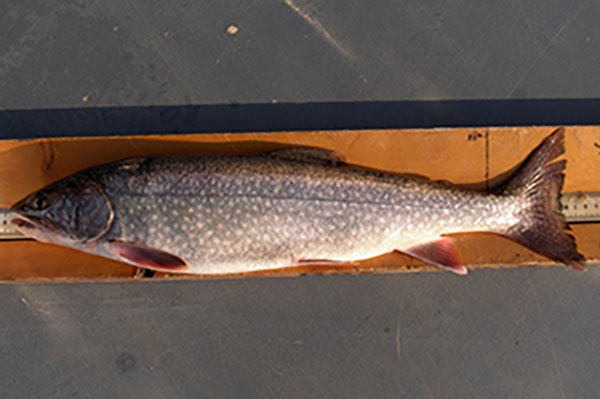MDNR Report
 Lake Superior Splake
Lake Superior Splake
Anglers fishing Lake Superior can help the Michigan DNR evaluate the splake fishery by reporting marked splake.
Splake, which are a hybrid cross between lake trout and brook trout, have been stocked in Lake Superior most years since 1971, with annual stocking since 1990.
Since 2021, marked splake have been stocked in Lake Superior. At the Marquette State Fish Hatchery, staff from the DNR’s Lake Superior and Northern Lake Michigan management units, as well as field staff from across the state, put in long hours carefully marking the splake by hand. These fish then get stocked at three Lake Superior ports: Copper Harbor, Keweenaw Bay and Munising. Splake stocked at each port get a unique mark specific to each location for further analysis. The goal is to create nearshore fishing opportunities in the smaller bays of Lake Superior, where some fisheries are available year-round.
“The data we collect from anglers assists in making decisions on how to best manage Michigan’s fisheries," said Patrick Hanchin, Lake Superior Basin coordinator. “Every marked splake reported matters to the data collection process. We’ll be marking splake through 2025, with the evaluation study being conducted through 2030.”
When anglers catch a splake, they should inspect it for missing fins or a jawbone clip, which indicate it has been marked. Marked fish then can be reported at Michigan.gov/EyesInTheField to give information such as species, length, weight, sex, and date and location caught, or by contacting a local DNR office.
Anglers also can report marked splake to DNR creel staff stationed at various ports along the Lake Superior shoreline. Because they're genetically tied to both lake trout and brook trout, splake can take the external appearance of the parent species, making them difficult to distinguish. Creel staff can help to correctly identify the fish, distinguish marks on fish and record angler trip data. Everyone is encouraged to provide their fishing trip information when approached by DNR creel staff.
Anglers are reminded that other natural resources agencies and tribal units mark a variety of fish species for different evaluation purposes. For more information on fish marking in Michigan, visit Michigan.gov/TaggedFish.





